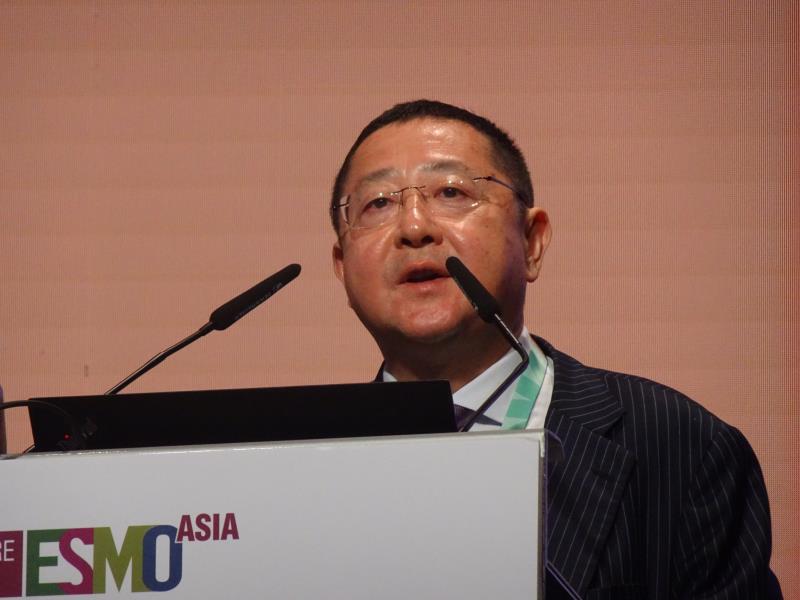Retifanlimab plus chemo improves survival in metastatic NSCLC





The addition of retifanlimab to platinum-based chemotherapy results in better overall survival in patients with metastatic nonsmall cell lung cancer (NSCLC), as shown in the phase III study POD1UM-304 presented at ESMO Asia 2024. Moreover, the combination treatment has a safety profile consistent with that of other checkpoint inhibitors.
“Retifanlimab improved survival and all secondary measures of efficacy when added to platinum-based chemotherapy for ... previously untreated metastatic NSCLC,” said Dr Shun Lu from the Department of Medical Oncology, Shanghai Chest Hospital, School of Medicine, Shanghai Jiao Tong University in Shanghai, China.
“[The] magnitude of benefit is comparable with that of the approved PD-(L)1 inhibitors and includes both squamous and nonsquamous histologies,” he added.
POD1UM-304 enrolled a total of 583 adult patients (median age 64.0 years) with metastatic NSCLC who have not previously received any systemic treatment for advanced disease and do not harbour driver mutations or rearrangements of EGFR, ALK, BRAF, or ROS1. Of these, 381 had nonsquamous and 202 had squamous histologies.
Lu and his team randomly allocated the participants 2:1 to receive either retifanlimab 375 mg (n=391) or matching placebo (n=192) plus standard-of-care platinum-based chemotherapy for nonsquamous (pemetrexed plus cisplatin/carboplatin Q3W 4 cycles then pemetrexed Q3W) or squamous (carboplatin plus paclitaxel/nab-paclitaxel Q3W 4 cycles) NSCLC for up to 2 years.
Overall survival served as the primary endpoint, while progression-free survival (PFS), overall response rate (ORR), duration of response (DOR), safety, and pharmacokinetics were secondary.
Based on the results, all study endpoints were met. Retifanlimab plus chemotherapy improved overall survival (18.1 months, 95 percent confidence interval [CI], 16.2–21.0; hazard ratio [HR], 0.75, 95 percent CI, 0.60–0.93; p=0.0042) when compared with placebo. [ESMO Asia 2024, abstract 627MO]
Other efficacy measures also improved with retifanlimab, including PFS (7.7 months, 95 percent CI, 6.9–9.0; HR, 0.64, 95 percent CI, 0.52–0.79; p<0.0001), ORR (51.7 percent, 95 percent CI, 46.6–56.7; p=0.0012), and DOR (12.7 months, 95 percent CI, 9.4–15.2).
Safety profile
In terms of safety, the retifanlimab arm had higher incidences of serious and grade ≥3 treatment-emergent adverse events (TEAEs) and TEAEs leading to treatment interruptions or discontinuation, consistent with the longer exposure to treatment in this group relative to the placebo arm.
“Safety is acceptable and manageable with standard guidelines, [and] no unique safety issues were identified,” Lu said. Moreover, the addition of retifanlimab did not compromise the delivery of chemotherapy.
“Despite an ongoing pandemic, COVID-19-related deaths were uncommon and were not increased by the addition of retifanlimab,” he noted.
“Based on the favourable benefit-risk profile demonstrated in POD1UM-304, retifanlimab in combination with platinum-based chemotherapy is another potential option for treatment of metastatic NSCLC,” according to Lu.
Retifanlimab is an anti–PD-1, humanized, hinge-stabilized, IgG4k monoclonal antibody approved in the US and European Union for Merkel cell carcinoma. [Cancer Res 2019;79(13 suppl):LB-268; J Immunother Cancer 2017;5:P249]